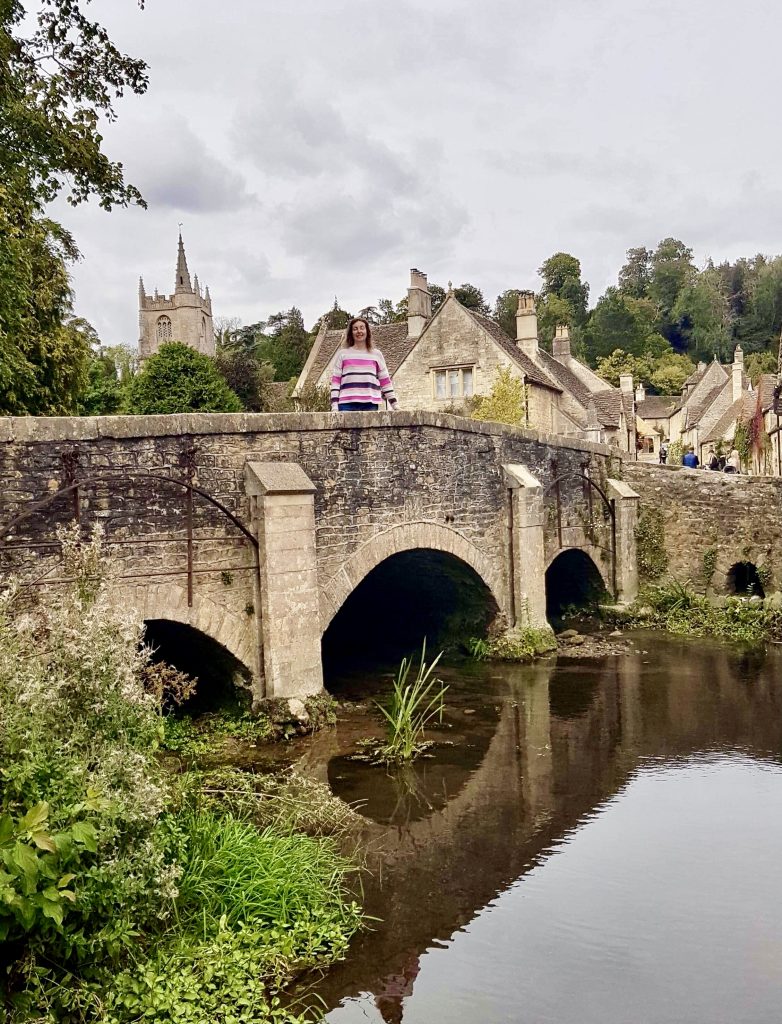Are you planning a trip to The Cotswolds?
The Cotswolds is an Area of Outstanding Natural Beauty, famous for its charming towns and villages, rolling countryside, storybook cottages and stately homes. The Cotswolds cover an area of nearly 800 square miles, mainly over the counties of Gloucestershire and Oxfordshire, but also Wiltshire, Somerset, Worcestershire and Warwickshire.
The picturesque village of Castle Combe – often called the prettiest village in England – is one of the loveliest places to visit in The Cotswolds.

Little has changed in Castle Combe village for many hundreds of years. In fact, as a conservation area, there have been no new houses built since c.1600 and this is what makes it so special. The parish of Castle Combe has over a hundred listed buildings.
Plan your perfect visit to this small Cotswold village with our handy guide.
Table of Contents - Tap to jump to a section
ToggleAbout Castle Combe
Castle Combe is named after a 12th Century Norman castle which once stood less than half a mile to the North of the village. It was built during the English Civil War of 1135 -1154 on the site of a Roman Villa which had been vacated by the fifth Century AD. Unfortunately, you are unable to see the castle today because it was abandoned by the 14th Century and fell into disrepair. The only remains are earthworks and some stonework. Despite this, it is still a listed scheduled monument.
Castle Combe Village is in two parts: Bybrook is the lower area in the valley, and the upper part is on the hill to the East.
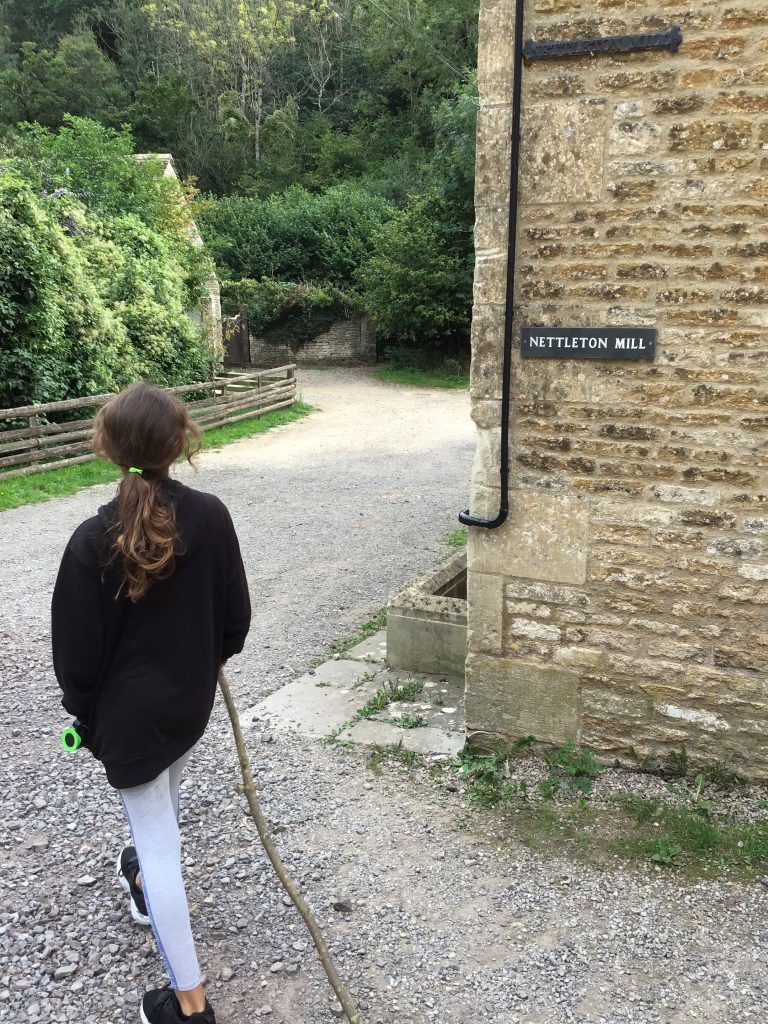
In the valley, the river Bybrook was once the site of at least 20 mills dating back to Roman times, and later on an important centre for the wool trade in the 13th and 14th Centuries. The Middle Ages were a prosperous time for the area due to the growth of a thriving cloth industry. The red and white Castle Combe cloth was renowned, not only in the markets of Bristol and Cirencester, but also in London and abroad. Many of the cottages you see today were built to house the spinners and weavers.
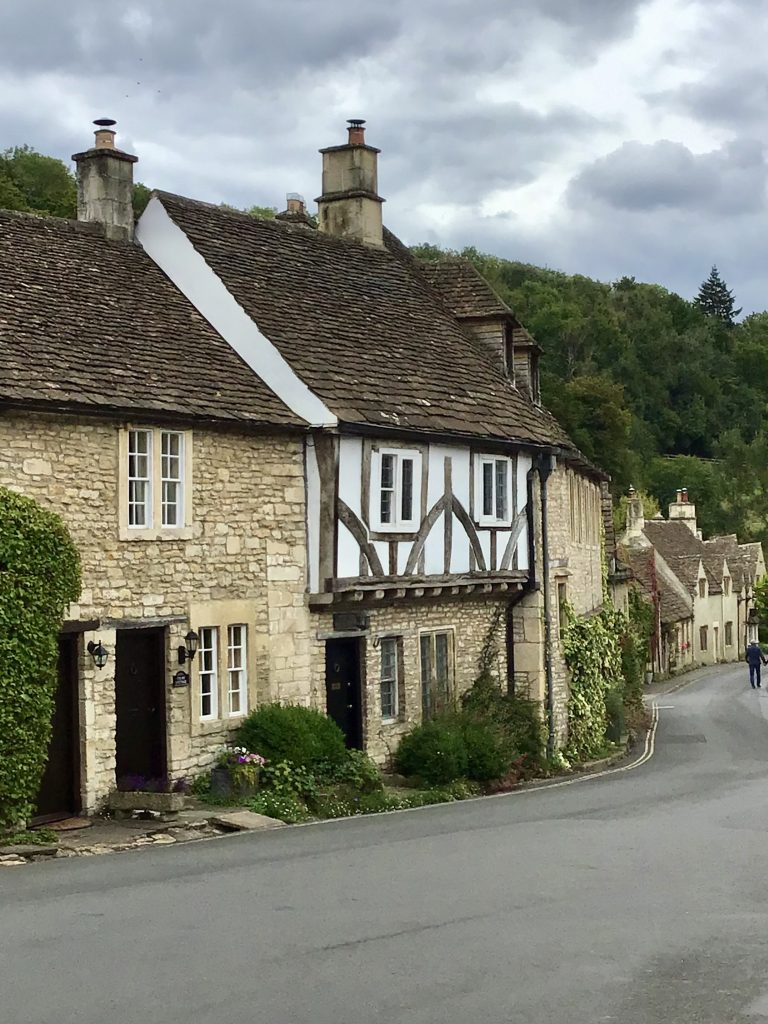
Today, it’s a popular tourists spot where visitors come to see a village where time has stood still! You won’t see any satellite dishes on the houses, street lights, or electricity and telephone cables across the village. Castle Combe is now a conservation area with 107 listed buildings.
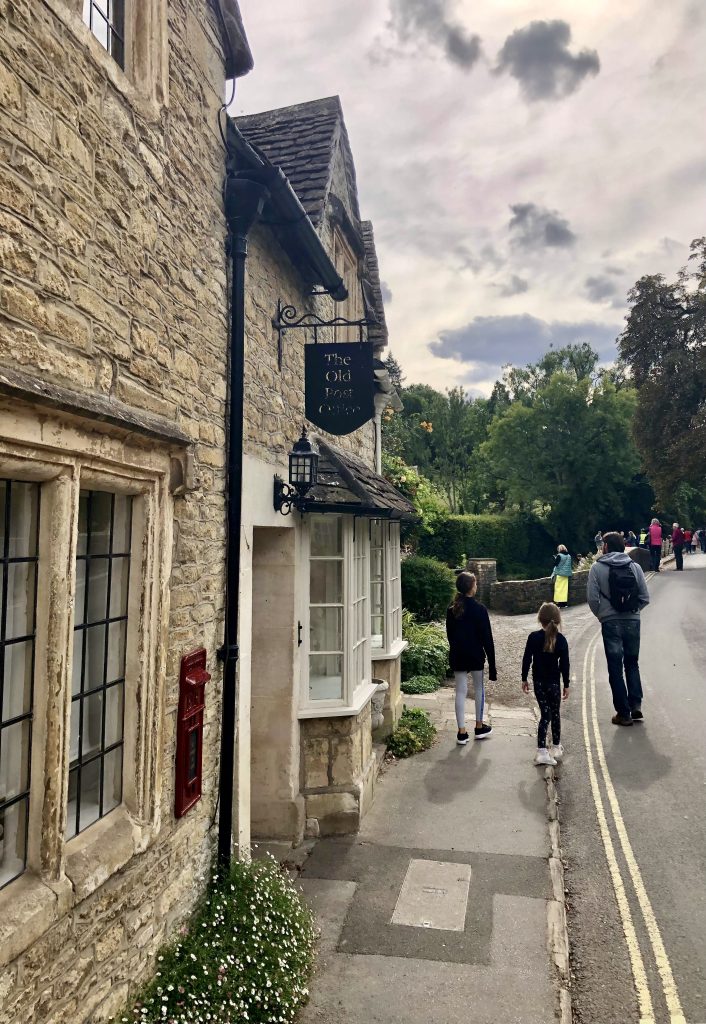
Castle Combe is a desirable film location, especially for period films/tv programmes due to its unspoilt historic buildings. It has been a location for films such as Dr Doolittle (1967), War Horse (2011) and Stardust (2007).
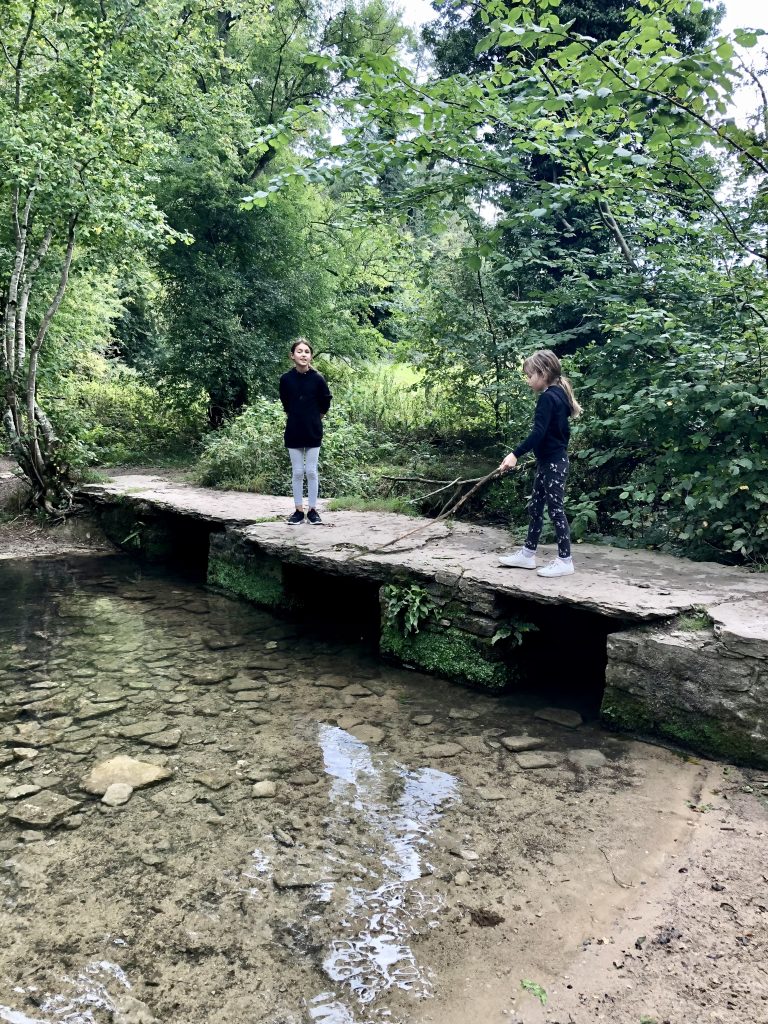
The valley surrounding Castle Combe is the ideal place to explore and walk around the beautiful woodland and along the river. The kids can paddle or play Pooh Sticks from one of the bridges over the Bybrook river.
Castle Combe is well known for its motor racing circuit located in Upper Castle Combe at the former RAF airfield.
Where is Castle Combe?
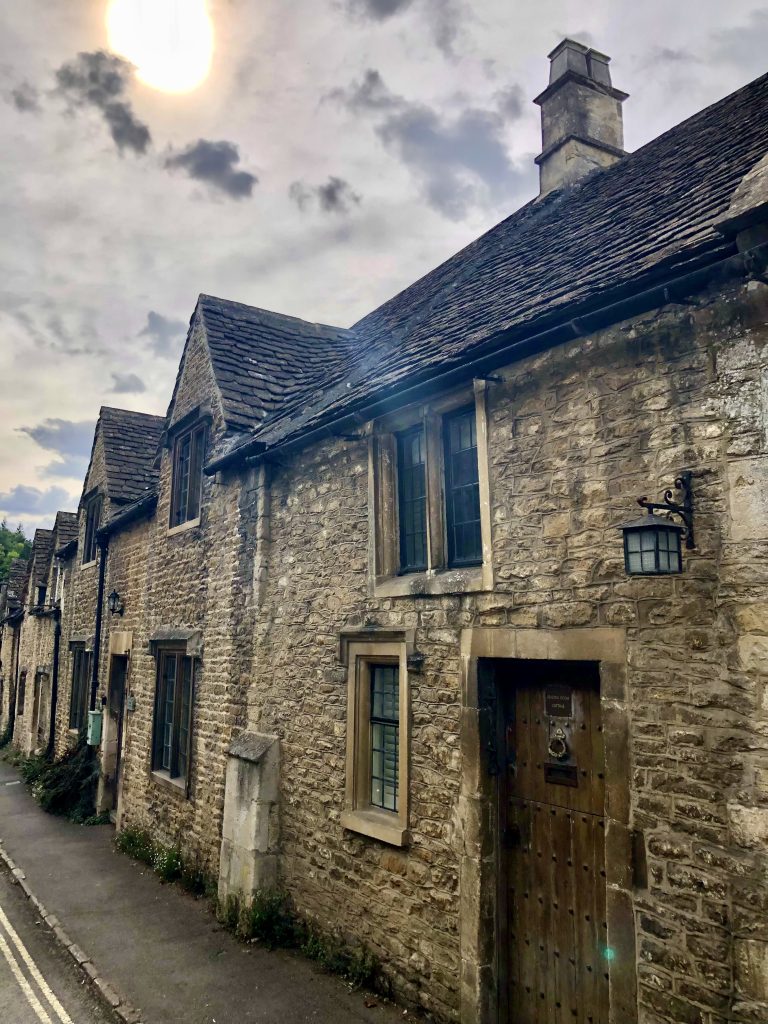
Castle Combe is located within the Cotswold Area of Outstanding Natural Beauty, in North-West Wiltshire, England. The village is about 5 miles North-West of Chippenham which is the closest town.
The best things to see and do in Castle Combe
Castle Combe is the perfect place for a wander. You’ll be stopping at every opportunity to take photos around this picturesque village.
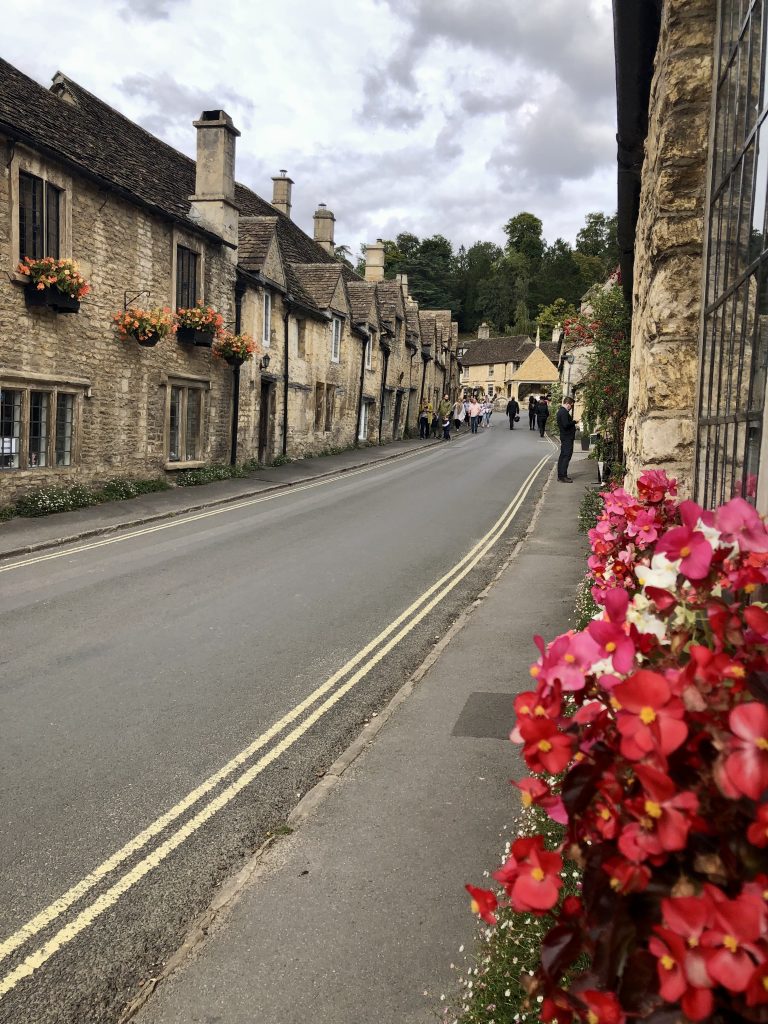
From the car park at the top of the hill, walk down Dunns Hill to the market square in the lower part of the village.
The Dower House
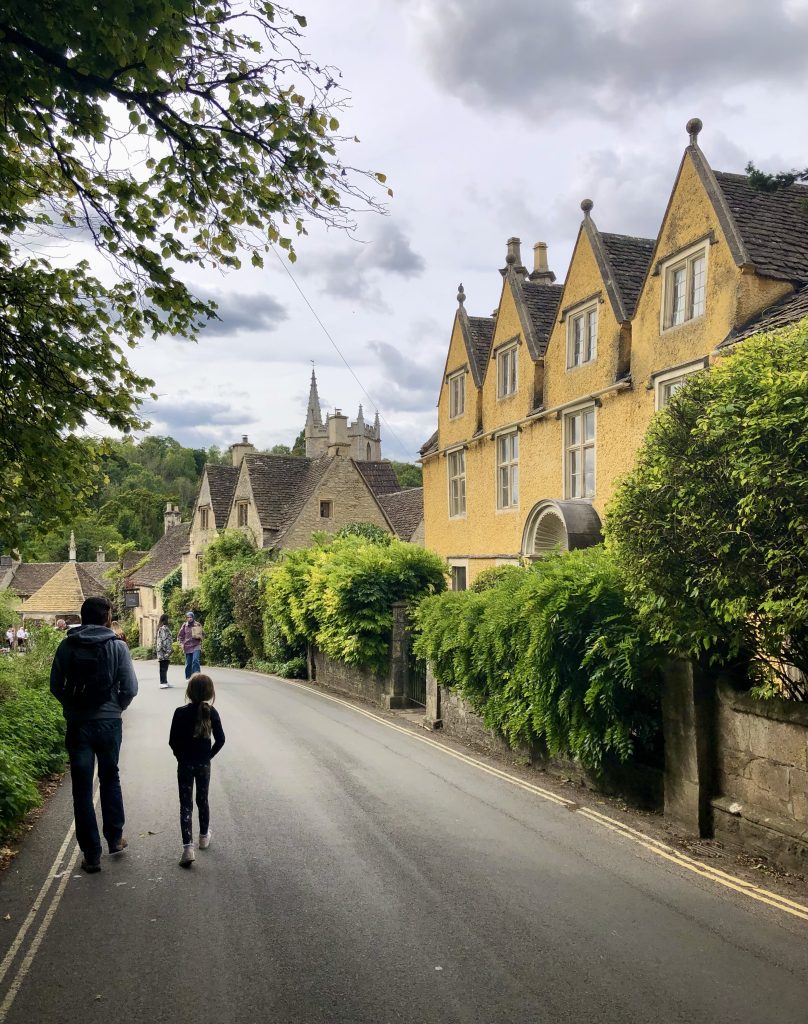
As you walk down to the lower village, you will pass a bright yellow house on your right-hand side. This Grade II listed house was made famous when it appeared as the fictional Puddleby-on-the-Marsh in the 1967 film, Dr Doolittle.
The Market Square
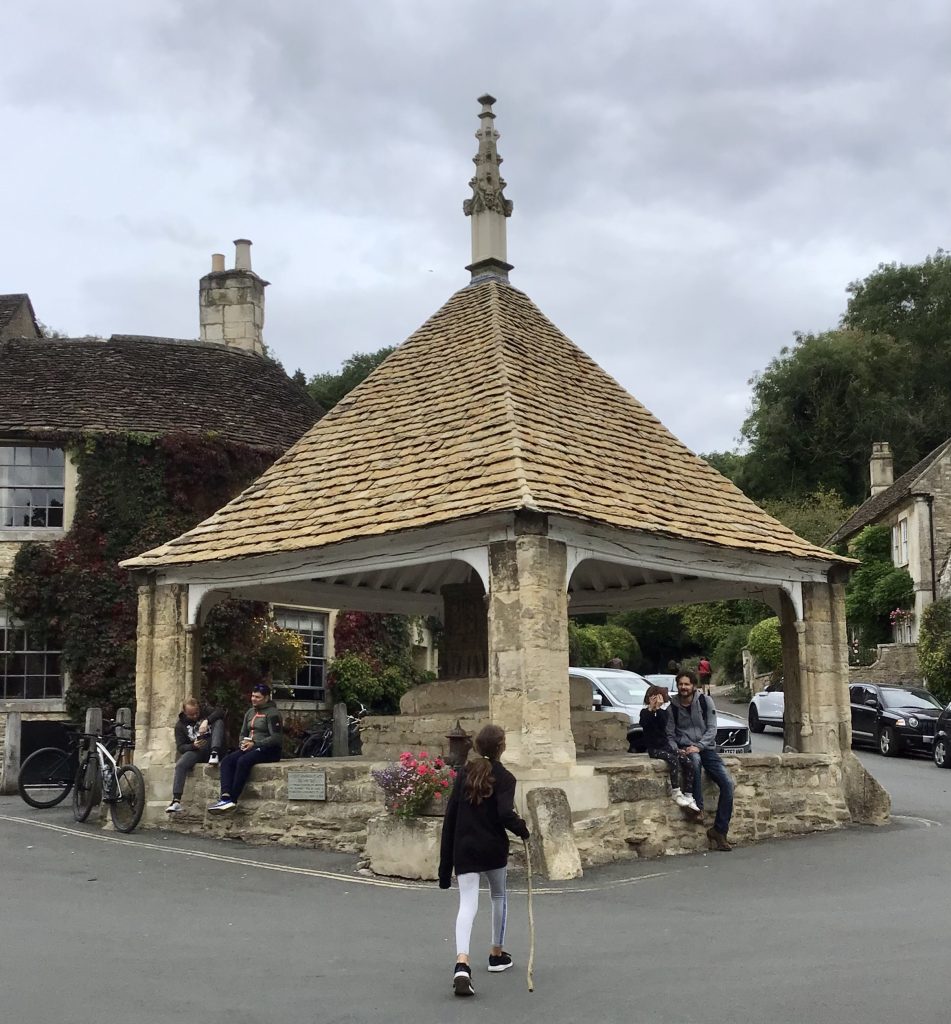
As you walk into the village square, you will see the Market Cross. In the 14th Century, the King granted permission for the village to hold a weekly market, and the Market Cross was built. The market cross is now a Scheduled Monument and stands in the centre of the village where three roads meet. This monument is a well preserved and fine example of a late medieval market cross. It is of considerable local importance and shows just how significant the cloth industry was in the area. Next to the Market Cross is one of two old water pumps in the village.

When we visited, a team of Morris Men were dancing in the centre of Castle Combe next to the market square which the children enjoyed watching.
St Andrew’s Church, Castle Combe
Across from the market square is St Andrew’s Church which is now Grade I listed. Originally founded in the 13th Century, it was extended when Castle Combe became a prosperous wool town in the fifteenth Century.
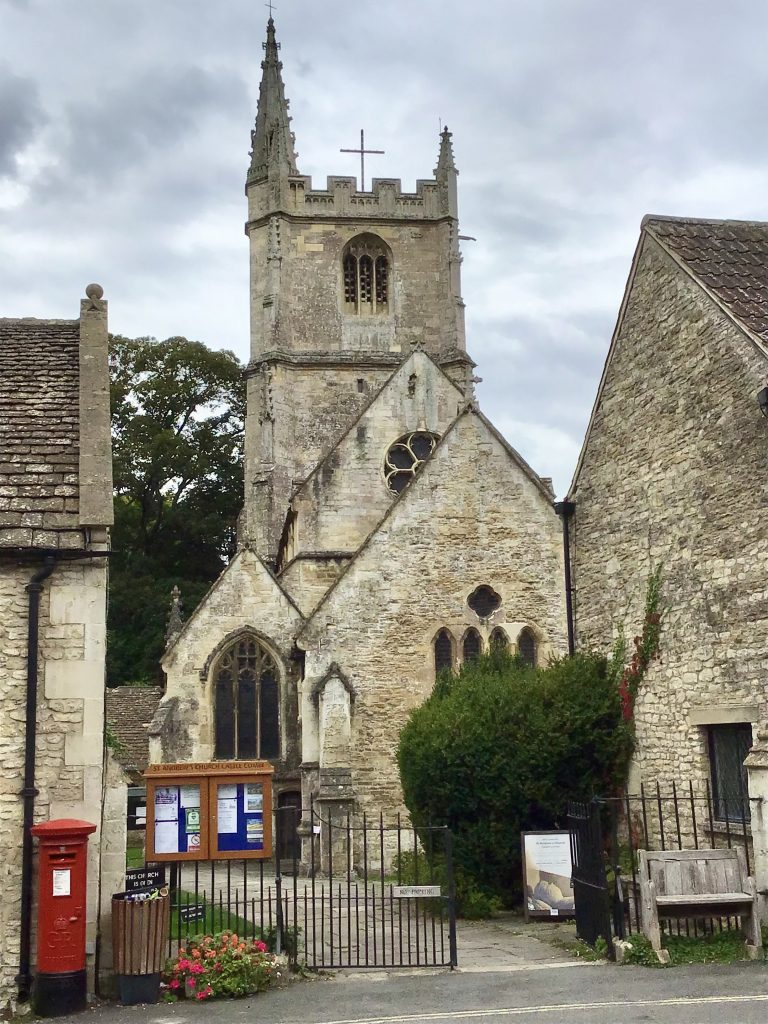
Take a look inside to see the beautiful stained-glass windows, tombs and one of the earliest working medieval clocks at the base of the tower. The clock was probably installed when the tower was completed, before 1500. It has no face – the men working in the fields needed to only know the hour, so the hours are struck on a large bell.
The Manor House, Castle Combe
If you’re looking for a luxurious place for afternoon tea or a special place to stay, you can visit the 14th Century Manor House Hotel in Castle Combe. Dine in the Michelin starred Bybrook Restaurant for added indulgence, book a round of golf or just wander around the stunning Italian gardens.
The Famous Bridge for a Photo
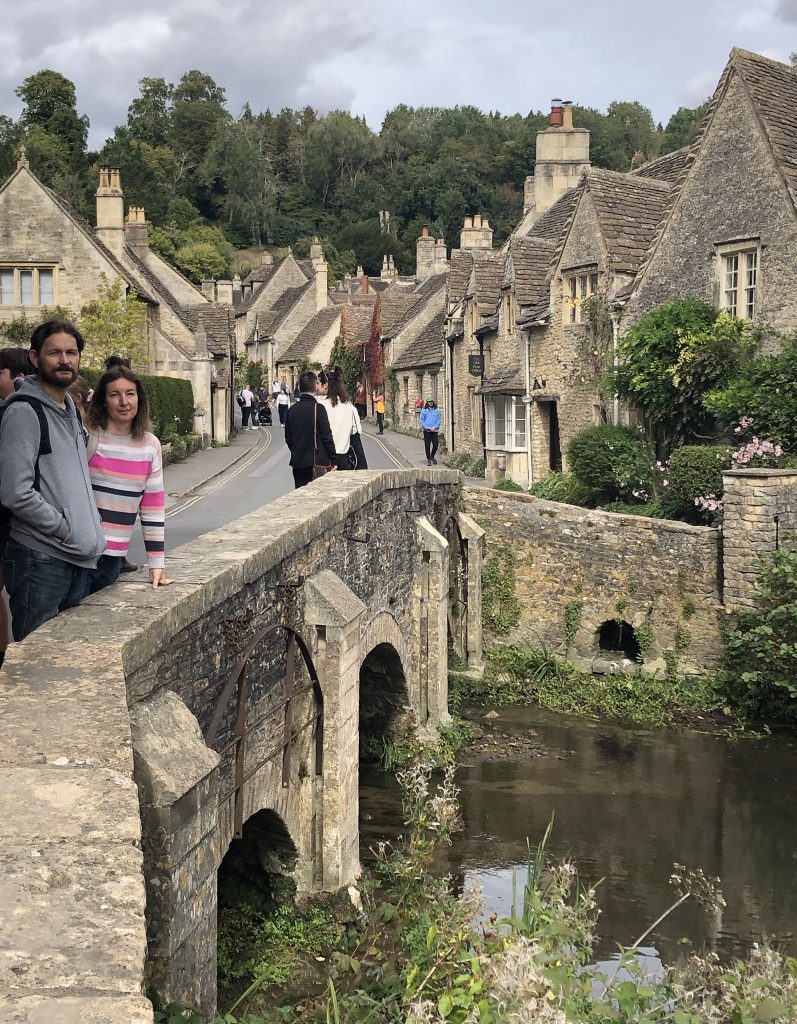
At the bottom of the village you’ll see the stone packhorse bridge over the River Bybrook. This is one of the best photo locations in the village and for this reason it gets busy. The row of Water Lane weaver’s cottages behind the brook, and the village stretching uphill behind the bridge make for a picture postcard shot! It’s not difficult to see why this view is one of the most photographed spots in the Cotswolds.
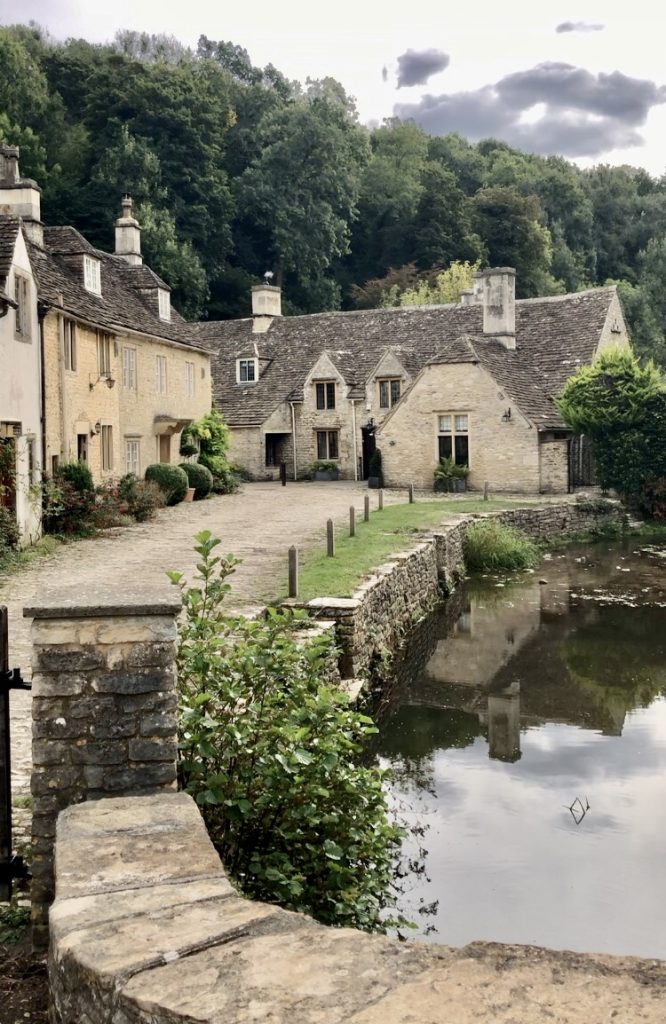
Visit early in the morning if you want to avoid the crowds and beware of the occasional car driving past.
Circular walk from Castle Combe
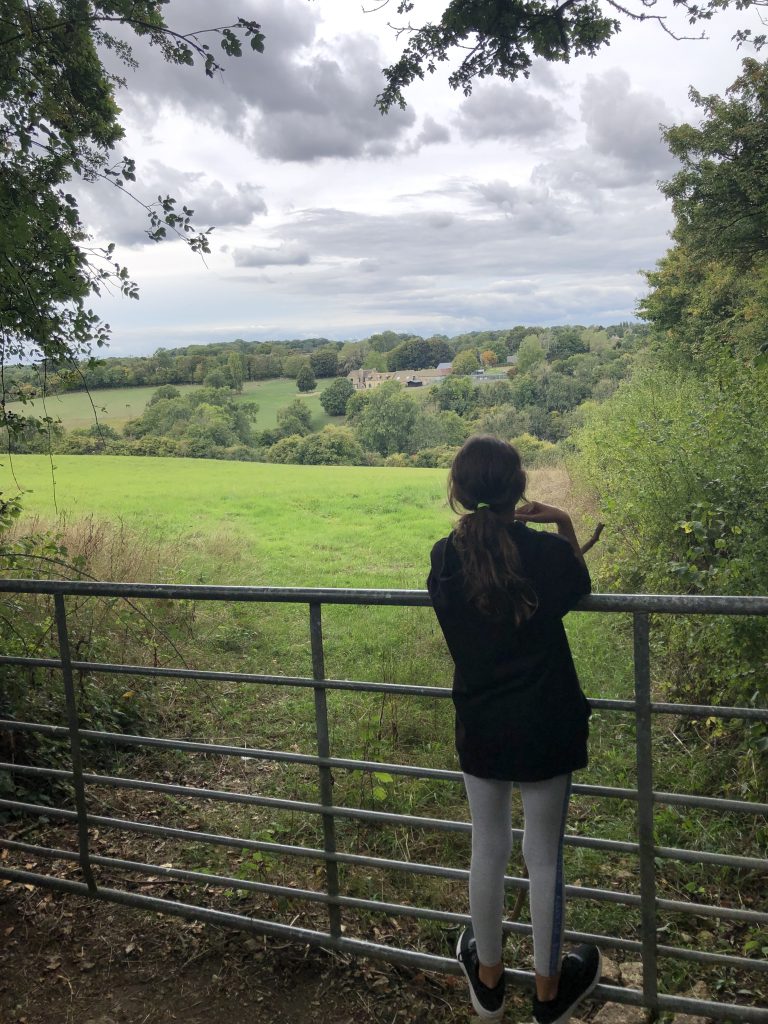
Go for a circular walk starting from Castle Combe. The route takes you around the valley through woodland, along the river and over the golf course. It’s a great walk for the whole family. Finish back in the village for refreshments. Click here for the route.
Where to eat in Castle Combe
There are a couple of pubs in Castle Combe that serve food. The Castle Inn is a 12th Century country pub which serves food and offers accommodation. There are tables and chairs outside to sit and watch the world go by!
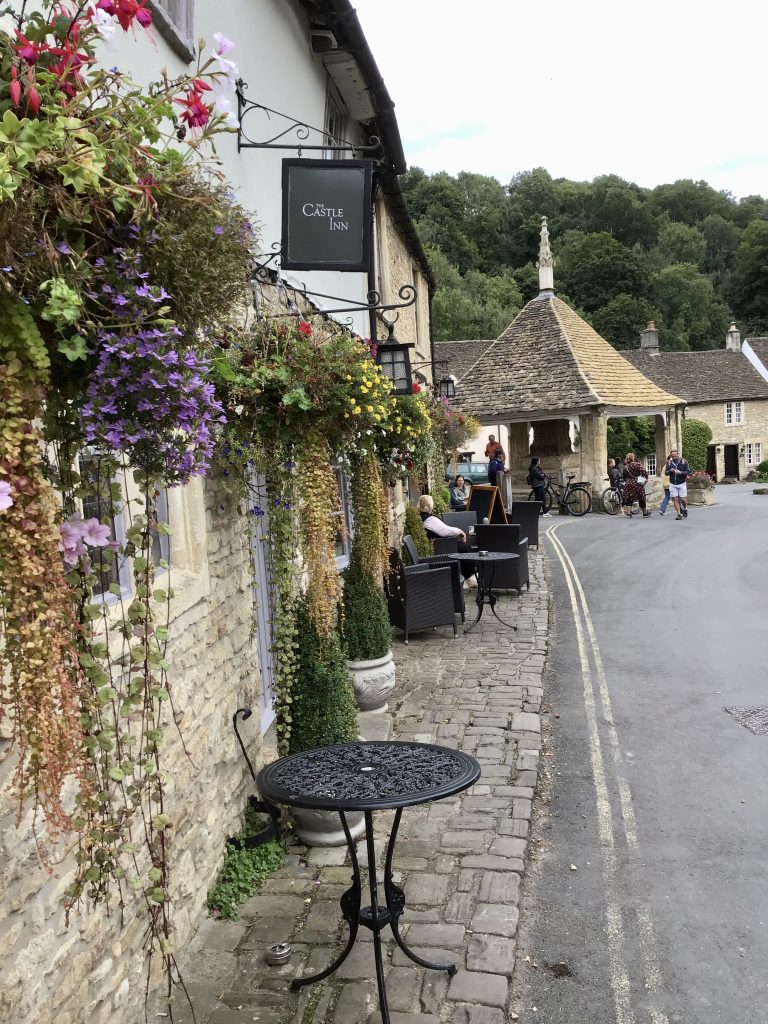
The White Hart is a 14th Century pub in Castle Combe village which serves food and has a courtyard garden out the back.
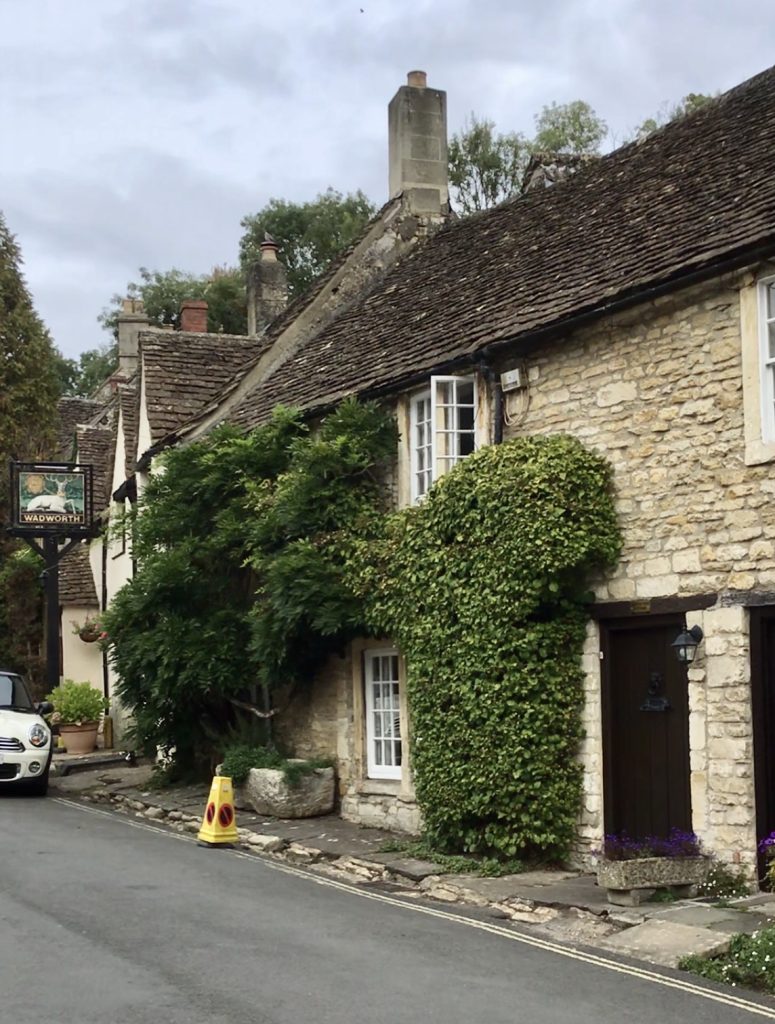
One of Castle Combe’s delightful traditions is the honesty boxes outside people’s homes where you can help yourself to goods such as cakes, jams and eggs from their stalls and put the money in the box. We tried some delicious homemade cake.

The Little Picnic Shop in Castle Combe can be found half-way down The Street on the left hand side before you reach the bridge. Here, you can order a picnic box which includes a sandwich, savoury and sweet food, and a hot or cold drink. This can be eaten in the park behind the shop. See their Facebook page for more information and their menu.

The Old Rectory Pop Up Tea Room is a private party venue which needs to be booked in advance. (Min. 6 adults).
The Old Stables Coffee Shop is a lovely place to stop after a walk. Located just of the main street there is indoor seating by the log burner and outdoor seating available too.
How long do you need, to see Castle Combe?
You could walk around Castle Combe in under an hour because it’s only a small village. But if you have longer, I would suggest our Castle Combe walk. Click here for details.
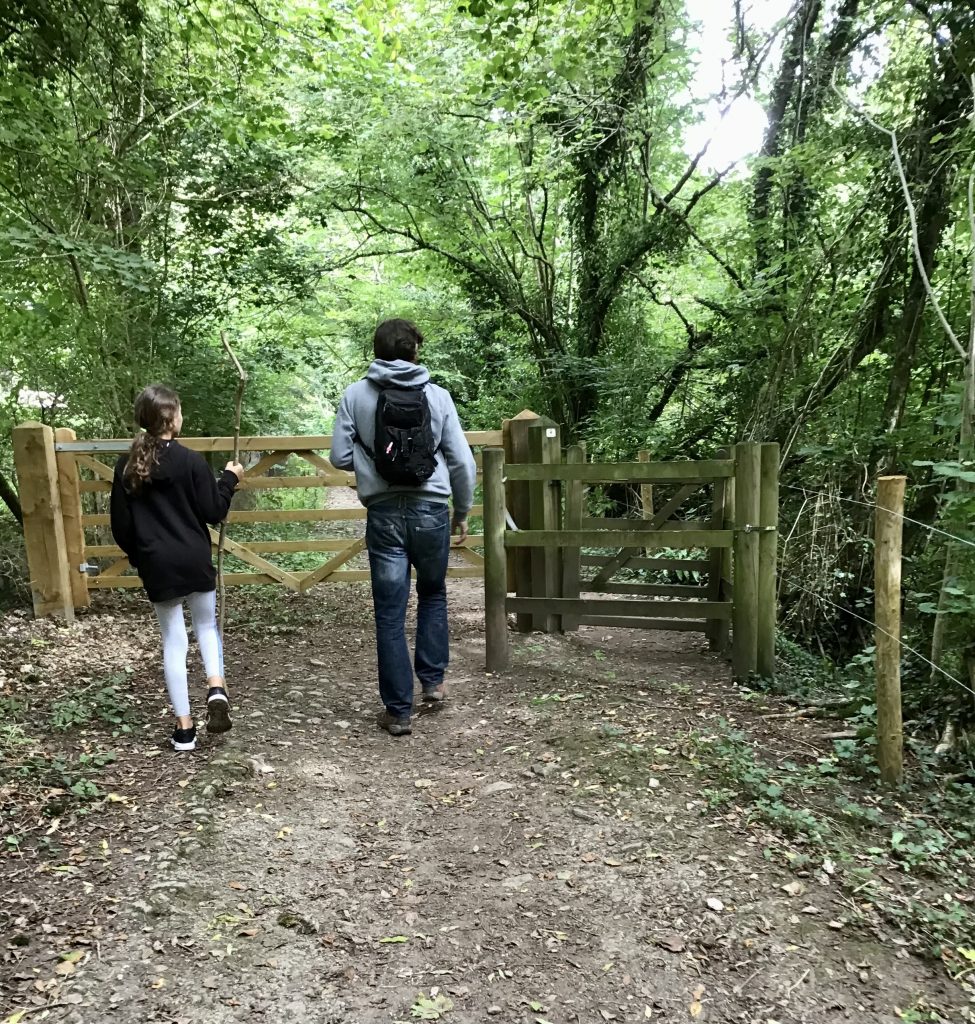
How to get to Castle Combe
By Car:
About two hours West of London by car via M4 (Jct 17); About 30 mins East from Bristol M4 (Jct. 18); About 35 mins North-East of Bath A4, A46, A420. Follow the brown signs for Castle Combe race circuit.
By Bus:
95/95A from Chippenham takes 20-30 mins
By Train:
The nearest railway station is Chippenham. Then take the bus or a taxi to Castle Combe.
Where to park in Castle Combe?
Castle Combe has a pay and display car park at the top of the village (free after 6pm). Address is Dunns Lane, Castle Combe, SN14 7HU. Please be aware that the walk down to the village is down a very steep hill. The roads are narrow through Castle Combe so don’t expect to park in the village itself.
Other places to visit in The Cotswolds
Cirencester is a market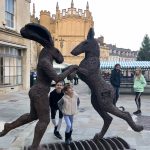 town is known as the capital of the Cotswolds and dates back to Roman times.
town is known as the capital of the Cotswolds and dates back to Roman times.
Stow on the Wold – visit St Edwards Church famous North Door which is said to have inspired Tolkien’s Doors of Durin in Lord of the Rings.
Arlington Row at Bibury is one of the most photographed row of houses in England. Now owned by The National Trust they date back to 1380.
Lacock , nine miles from Castle Combe, is a village owned almost entirely by the National Trust and is home to Lacock Abbey. Parts of the village and abbey cloisters were used as a film location for the Harry potter films.
nine miles from Castle Combe, is a village owned almost entirely by the National Trust and is home to Lacock Abbey. Parts of the village and abbey cloisters were used as a film location for the Harry potter films.
Bourton on the water – known as Venice of the Cotswolds due to the many bridges that criss-cross the river. It’s worth visiting for the lovely high street with its arched stone bridges over the River Windrush and the quaintest model village.
Westonbirt Arboretum is one of the most beautiful and important plant collections in the world. Ten miles from Castle Combe, it’s a beautiful place for a walk amongst the 2500 species of tree from all over the world.
Dyrham Park 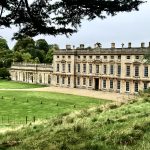 is a 17th Century House, garden and ancient parkland owned by The National Trust, ten miles from Castle Combe.
is a 17th Century House, garden and ancient parkland owned by The National Trust, ten miles from Castle Combe.
Upper and Lower Slaughter – see the Old Mill Museum, walk the cobbled streets and see the unspoiled Cotswold villages which have remained unchanged for over 100 years.
Badminton Horse Trials held at the Badminton Estate every May, is only five miles from Castle Combe.
The Georgian city of Bath is 12 miles away. The city is a World Heritage Site and home to the historic Roman Baths, Royal Crescent and Bath Abbey.
We hope you enjoy your visit!
Share this post: on Twitter on Facebook on Google+
